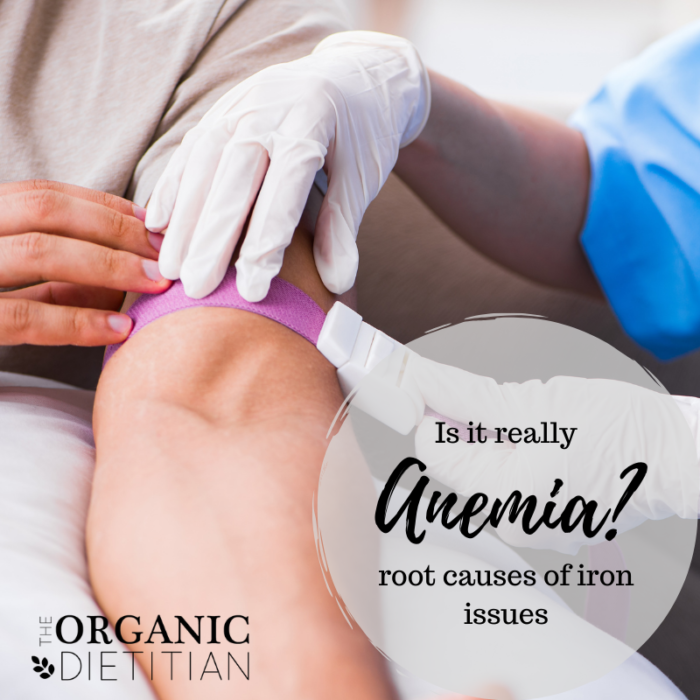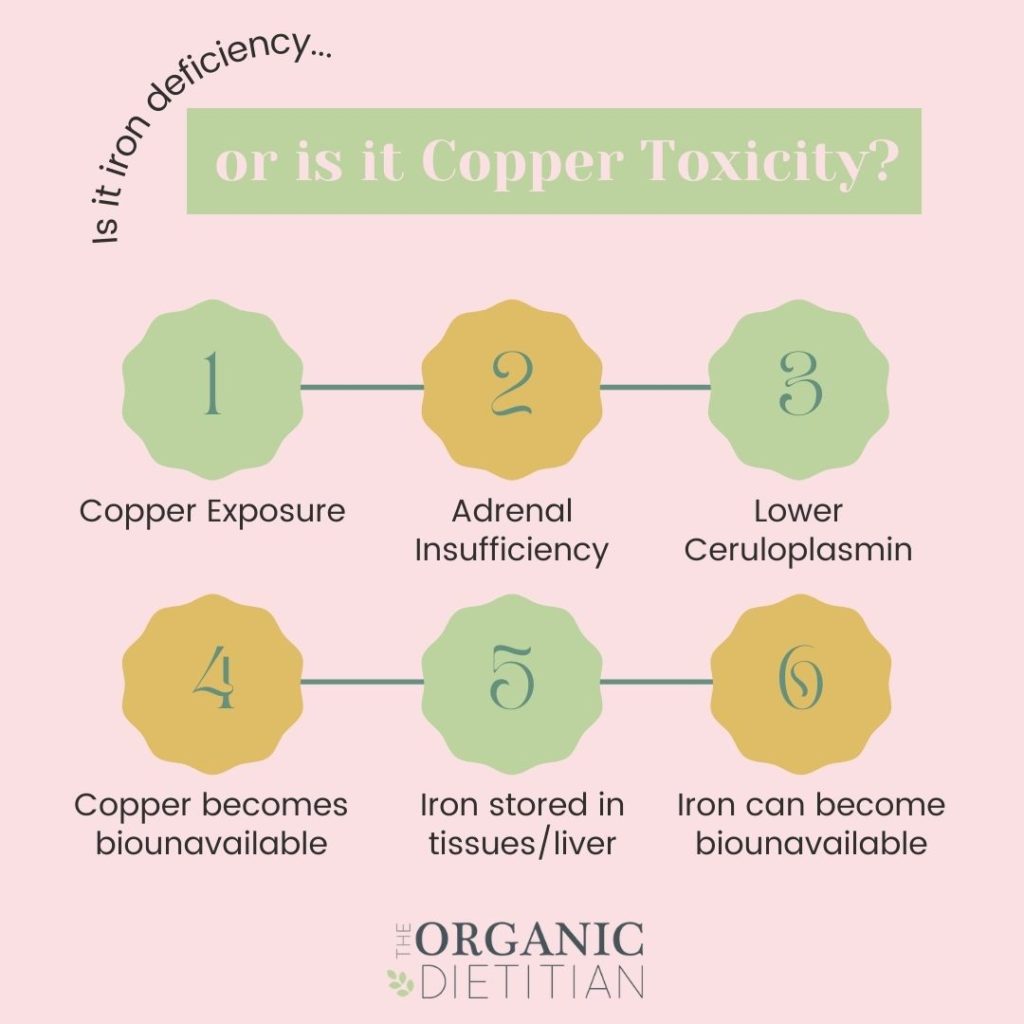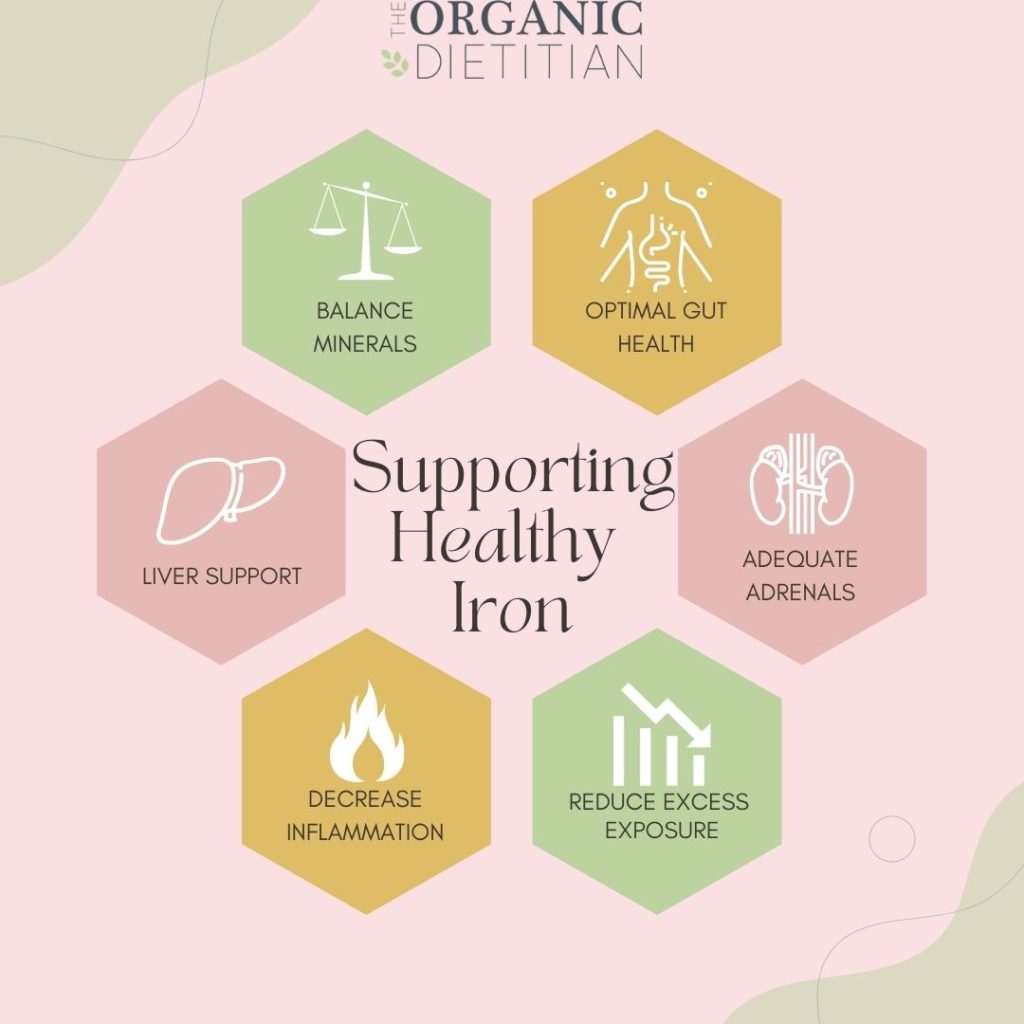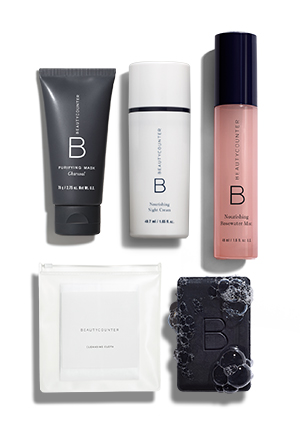5 February, 2022
Is It Really Anemia? Root Causes of Iron Issues

Do you have iron issues? Maybe you have been told you have anemia or had ferritin return abnormal on a blood test. But what if there are other root causes of iron issues?
This is all too common, and many of my clients have experienced one of the above at one point or another.
The common scenario is low ferritin on a blood test; iron supplements or infusions are recommended.
But the truth is that much detective work is required to understand what may be causing your low iron, and root causes are rarely addressed. Taking iron may not fix the problem or can make things much worse.
There are many possible reasons for iron issues, but I wanted to highlight a few today that are less talked about but often the most common.
In this post, you will learn:
Around 25% of our population is estimated to have iron deficiency anemia. The traditional approach to addressing this is taking iron supplements. But what if low iron isn’t the actual problem? And what if taking iron supplements without understanding what is happening can be dangerous and contribute to more problems?
Other Root Causes of Iron Issues including Low Ferritin
Microbes in the gut love iron-like candy
Pathogens like bacteria, fungi, and viruses can “eat” iron, or the body might hide iron to protect you from their worsening. Taking iron supplements might also feed bad bugs in your gut and worsen digestion.

Iron overload is much more common than low-iron
Iron can look low on a blood test but is dysregulated and unavailable in the body. Even in cases of what appears to be iron deficiency, the body might want low iron to protect it from other things.
Copper toxicity can create iron issues
Copper toxicity (or bio-unavailability) prevents iron from attaching to hemoglobin. Bioavailable copper is required to convert iron from the ferric to the ferrous form and back again to produce hemoglobin. Adequate copper is required to help recycle iron in the body. Taking an iron supplement when copper imbalance is present often contributes to iron toxicity!
Related Post: The Complete Guide to Copper Toxicity
Is it anemia of chronic disease or anemia of inflammation?
Anemia of chronic disease is also called anemia of inflammation. You may have a normal or sometimes increased amount of iron stored in your body tissues but a low iron level in your blood. Inflammation may prevent your body from using stored iron to make enough healthy red blood cells, leading to anemia.
Related Post: 4 Root Causes of Chronic Inflammation
So, if you are experiencing iron issues or have abnormal ferritin, we should be asking WHY!

Other Facts to Know Before Supplementing with Iron
We only need about 1mg per day of iron by mouth every day; however, we are often exposed to a great deal more than that, partly due to iron fortification in food.
Look at your box of cereal, flour, bread, or grains. Even birth control can contain iron in inactive pills. Cast iron, tap water, soil, and more are all possible ways to increase iron exposure.
Our bodies aren’t able to eliminate large amounts of iron daily; in fact, only about 1 mg is lost daily via nails, dead skin, or during our periods.
When we consume more iron than we can eliminate, other minerals like copper, zinc, magnesium, and molybdenum become deficient, out of balance, or bio-unavailable, creating even more iron problems.
When we are stressed, have adrenal insufficiency or low cellular energy, have congested livers, have toxic guts, or have trouble absorbing nutrients, we can also experience more iron problems.
This perfect storm can create iron toxicity (or high levels of bio-unavailable iron), which can be one root factor for anemia or ferritin problems.
Iron overload has also been linked to over a hundred autoimmune conditions, including endometriosis, fast aging, osteoporosis, liver issues, cancers, heart disease, gray hair, dementia, and more.
Are your iron issues, anemia, or ferritin problems copper toxicity (aka copper bio-unavailability)?
So, how do copper problems lead to iron problems?
There are a few different ways, but let’s discuss one.

- Exposure to copper from birth control (not just a copper IUD), it is passed in utero, vegan/vegetarian diet high in copper and low in bioavailable zinc, poor bile, stress/adrenal insufficiency, taking supplements that contain copper, anything that raises estrogen including xenoestrogens from environmental chemicals, copper pipes and more. GUT ISSUES can also prevent adequate zinc absorption which can cause copper to rise too (you know I had to throw a gut connection in there).
- Adrenal insufficiency can contribute to copper issues, but copper is also excitatory to the adrenal glands, further stressing the adrenals and lowering important adrenal minerals like sodium and potassium.
- Strong adrenals are required to help the liver make ceruloplasmin (Cp), which helps move copper out of the body. Chronic stress = low Cp = more copper retention.
- Any copper we are exposed to without enough Cp can get pushed into storage. First, in the liver and then in the brain. Stored copper is not usable and becomes bio-unavailable.
- Copper and Cp are also required to help recycle/mobilize iron in the body. Without these, iron can start to build up in the liver and other tissues/joints, which can further lower Cp.
- The storage of iron can create bio-unavailability, making it toxic and oxidizing.
My message is that when we experience issues, there is often more to the story. Answers are rarely cut and dry, so the more we can understand, the more chance we have of long-term solutions.
Feel like you are chasing symptoms?
If iron, ferritin, and anemia are issues for you, where do you start getting things back into balance?
It isn’t simple, cut and dry, black and white, or one size fits all. Working with a skilled practitioner who understands these steps to help guide you is critical. To learn more, start with my FREE 4-part video training, Heal Your Gut for Good!
Supporting Healthy Iron
Now that you know more about other root causes of iron issues, let’s discuss a few basics about what is required. This will take time and a step-by-step approach.

Healthy cells and, therefore, adequate HPA axis function is required. Cumulated stress and unresolved trauma impair so much, including digestion, detoxification, ceruloplasmin production (required for adequate copper, which is necessary for adequate iron), and your mineral status.
Related Post: You Don’t Have Adrenal Fatigue – What is Really Going On?
To aid in this process, optimal gut health, including adequate stomach acid, is required for proper breakdown and absorption of nutrients.
Related Post: Beyond Probiotics: 10 Key Factors in Healing Your Gut
Liver support is important, too (the gut is the biggest source of toxicity in the body).
Related Post: Keep Your Liver Healthy with These 5 Support Tools
Reduce excess exposure to higher iron from fortified foods, birth control pills, cast iron, tap water, well water, supplements, etc.
Know your nutrient status, including your minerals. Retinol vitamin A, whole food vitamin C, B12/B6, molybdenum, bioavailable copper, magnesium, zinc, sodium, and potassium all need to be considered. I prefer to use a Hair Tissue Mineral Analysis (HTMA) to assess minerals with my clients. Learn how to interpret and implement HTMA with yourself or your clients using a truly holistic, whole-person, trauma-informed, transformational coaching approach in Holistic HTMA Pro certification program. In fact, we have an entire video in the course discussing the root cause factors of iron issues to consider and what to do about them.
Consider possible metaphysical connections to iron imbalances that are hugely overlooked.

So you see, it is essential to consider more than your iron status or ferritin because there are other root causes of iron issues. Digging deeper and looking at the whole picture is key if you want something more than a band-aid approach.










I have a copper deficiency from taking huge amounts of zinc. The copper deficiency caused me to stop absorbing iron and my ferritin plummeted.